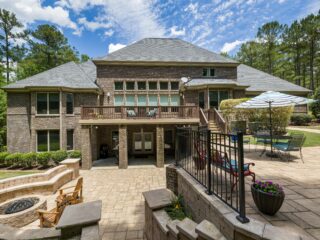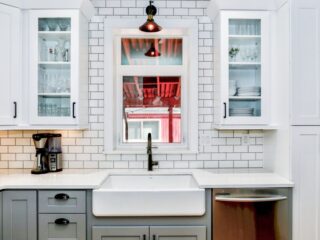
Repurposing and making the most of what we have has become increasingly popular for some—and a necessity for others. Yet, many homeowners overlook a hidden gem in their own homes: the attic.
Whether your family has expanded and you need an extra bedroom or playroom, or you’re simply looking for a quiet retreat, attics offer the perfect opportunity to create a functional and cozy space.
How to Transform Your Attic
With a little creativity, this often-unused area can become the highlight of your home; you just need to keep these things in mind:
Roof Pre-Check and Repairs
Before converting your attic, you should ensure the roof above it is in good shape. Any vulnerabilities, such as leaks or damaged shingles, can jeopardize your renovation efforts.
This is especially important for homes in regions with extreme weather, like hailstorms in the Midwest, hurricanes along the Gulf Coast, or heavy snow in the Northeast. Regular inspections by local expert crews can help identify issues before they escalate.
For example, a Kansas City roofer understands the demands of high winds and hailstorms common in the Midwest, while a professional in Los Angeles might focus on solutions for heat and sun damage. On the other hand, in snowy regions like Denver or Minneapolis, specialists prioritize roofs that can withstand heavy loads and ice buildup.
Insulation: Keeping Your Attic Comfortable Year-Round
Attics are notorious for being uncomfortably hot in summer and freezing in winter. Proper insulation is essential to maintaining a stable temperature and managing energy costs.
Insulation tips:

- For regions with colder winters, like the Midwest, high-quality spray foam or batt insulation helps retain warmth.
- In warmer climates, insulation prevents excessive heat from entering your home, reducing the strain on your air conditioning.
- Adding insulation is often a straightforward upgrade, but it’s crucial to ensure no gaps or weak spots. Properly installed insulation also prevents moisture buildup, which can lead to mold.
Ventilation: Maintaining Airflow and Comfort
Ventilation is just as critical as insulation when converting an attic. Heat and humidity can build up without adequate airflow, and that will create an uncomfortable—and potentially damaging environment.
How to ensure proper ventilation:
- Install soffit vents and ridge vents to create natural airflow.
- Consider adding an attic fan to keep the space cool during the summer months.
- Seal any leaks to ensure controlled ventilation while preventing drafts.
Heating and Cooling
Because attics are located directly under the roof, they’re especially susceptible to extreme temperatures. Whether it’s the blistering heat of summer or the freezing chill of winter, ensuring a stable and comfortable environment requires careful planning.
We already mentioned insulation and ventilation, but you can also:
- Install an HVAC system to provide both heating and cooling specifically for the attic.
- Use blackout shades or tinted window films to control sunlight and reduce heat.
- Install ceiling fans to enhance air circulation and distribute temperature evenly.
Finishing Touches: Choosing Materials for Comfort and Durability
Once the structural work is complete, it’s time to focus on creating a comfortable and stylish living area. Attics have sloped ceilings and often limited square footage, so thoughtful material choices are key:
- Use light-colored paint and reflective finishes to make the space feel larger and brighter.
- Carpeting or thick area rugs can help insulate the floor and add a cozy touch, especially in colder climates.
- Exposed beams or architectural quirks can be highlighted as design features to give the room a unique character.
Lighting: Brightening Up Your New Space
Lighting can dramatically transform an attic, especially if the space has limited natural light. While adding new windows may not always be an option, there are plenty of creative solutions:
- Skylights are an excellent choice for bringing in natural light and can double as a ventilation feature.
- Recessed lighting works well for sloped ceilings, keeping the space visually open.
- String lights or pendant fixtures can add warmth and charm to the room.
Consider layering different types of lighting to suit various activities, from reading to entertaining.
Maximize Your Space: Smart Layout and Storage Ideas
Attics often have unusual shapes, such as sloped ceilings or low eaves, which can make furniture placement challenging. Instead of fighting the space’s limitations, embrace them with creative solutions:
- Built-in shelving or storage units can make the most of awkward spaces under sloped ceilings.
- Use multi-functional furniture, such as a daybed with storage drawers, to save space.
- Mirrors and strategic furniture placement can make the attic feel more open and airy.
Make Your Attic Your Next Go-To Space
Your attic is more than just a place to stash holiday decorations—it’s a blank canvas waiting to be transformed. With the right planning and upgrades, it can become a cozy, functional retreat.
Think of it as uncovering a hidden gem within your home—one that adds charm, comfort, and value. So why let all that potential go to waste?






